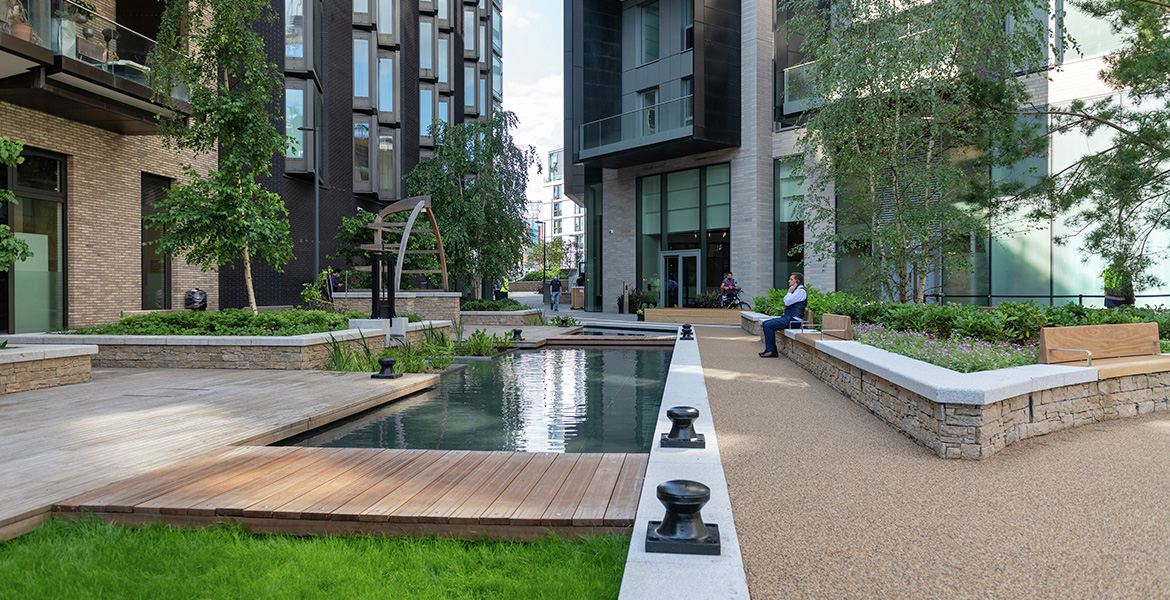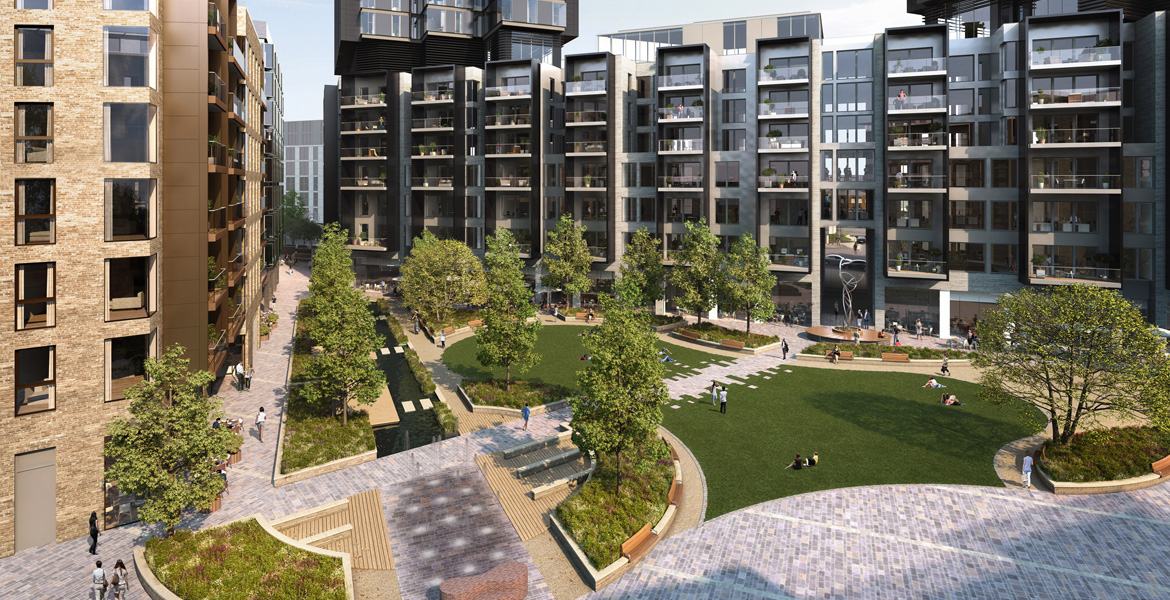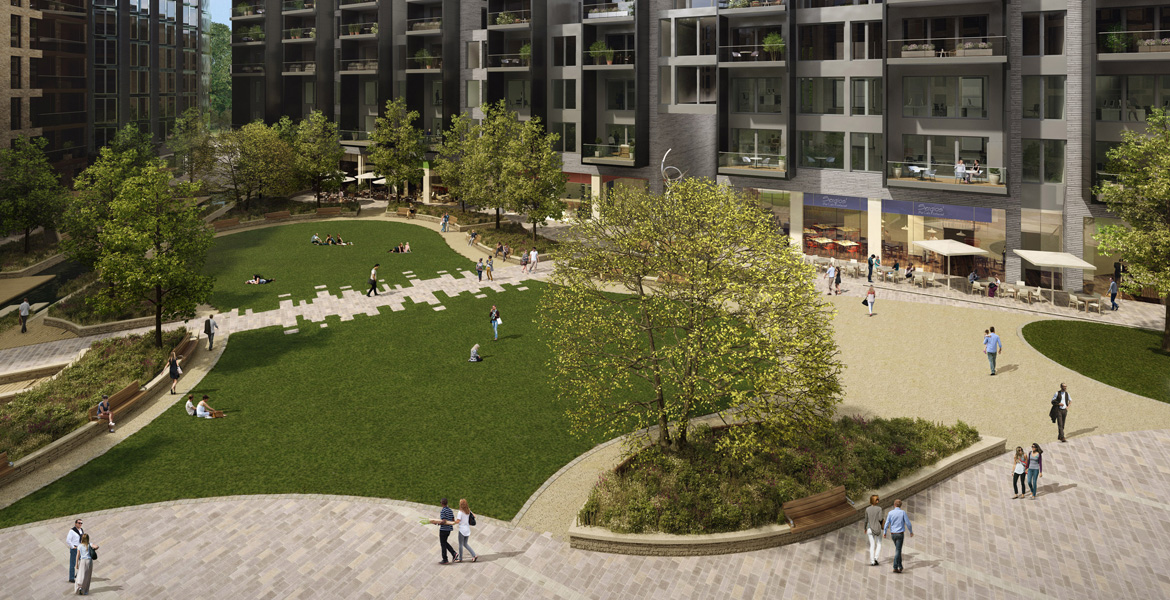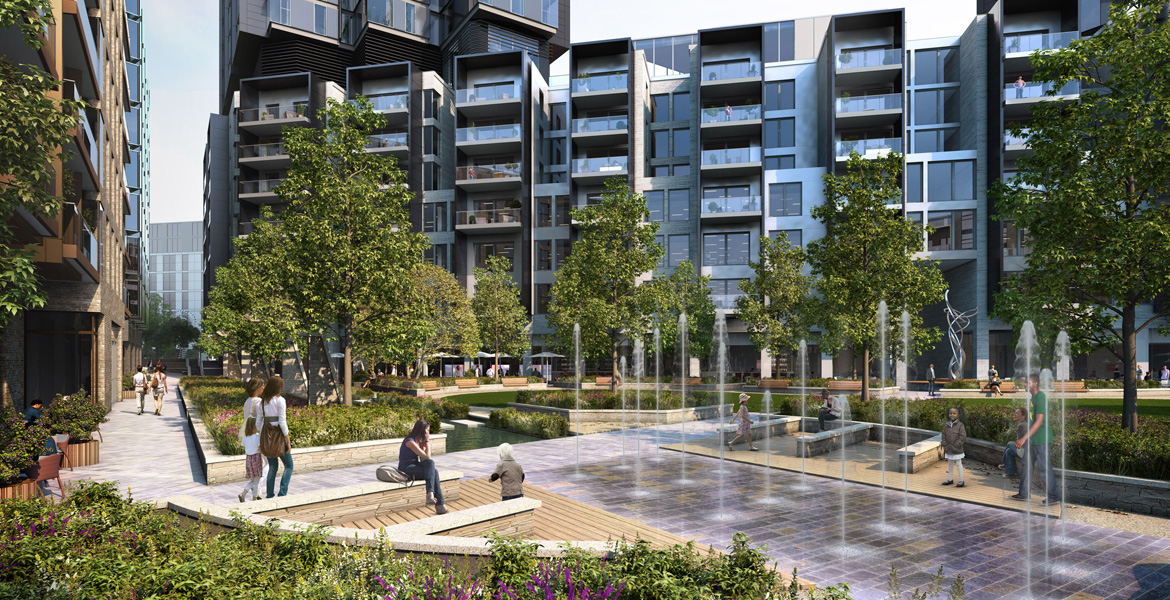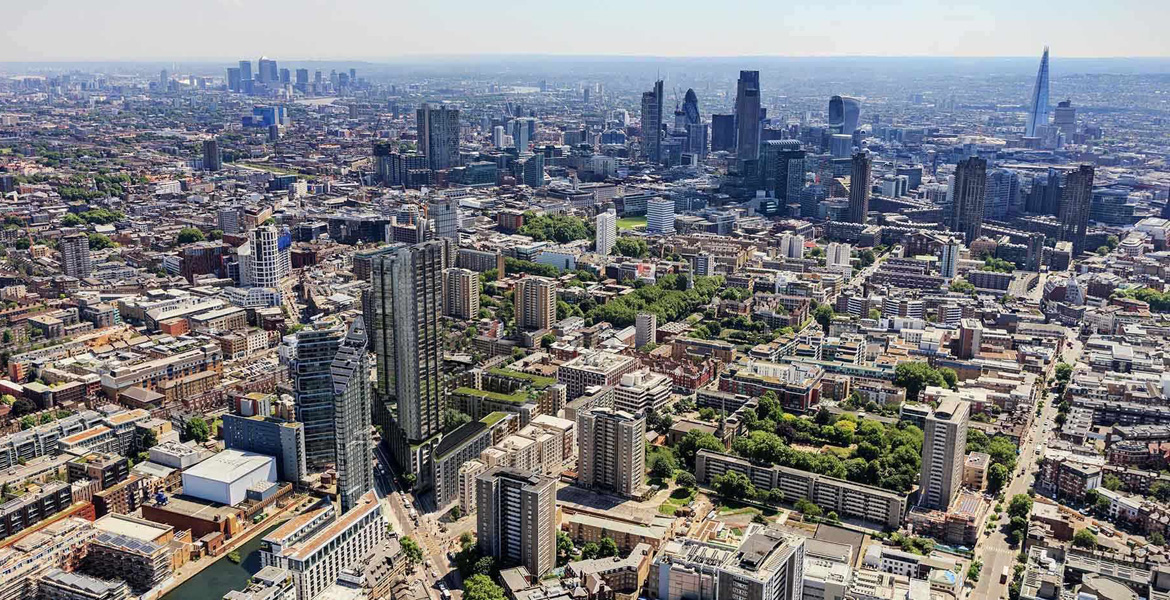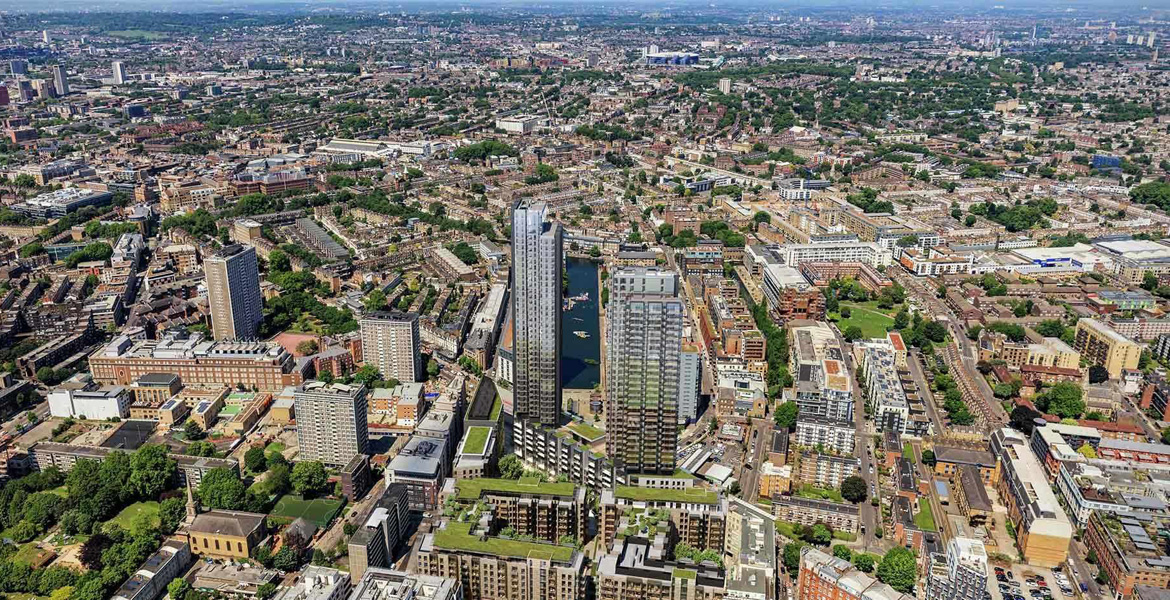250 City Road, Islington
250 City Road creates a new landmark destination space at the heart of one of the most vibrant areas of the Capital.
Situated in Islington, in a prominent location between Angel and Old Street opposite City Road Basin, 250 City Road is a within walking distance of the City of London’s financial district. The scheme consists of a range of residential blocks as well as two elegant residential towers surrounding a little under two acres of beautifully landscaped green spaces and secluded courtyards which create a sense of calm, connected and contemporary living.
The MW Approach
The vision for 250 City Road is one of transformation, regenerating an existing location to fulfil its true potential. Murdoch Wickham’s landscape design concept was to reflect the history and celebrate the heritage of the site with the creation of a contemporary canal water feature. This focal water rill is animated with cascading weirs reflecting the industrial workings of a canal and creating a marker leading into the site. Murdoch Wickham have then created a Central Plaza surrounded by mature trees wildflower beds that complement the cafés and restaurants that open out into the public realm.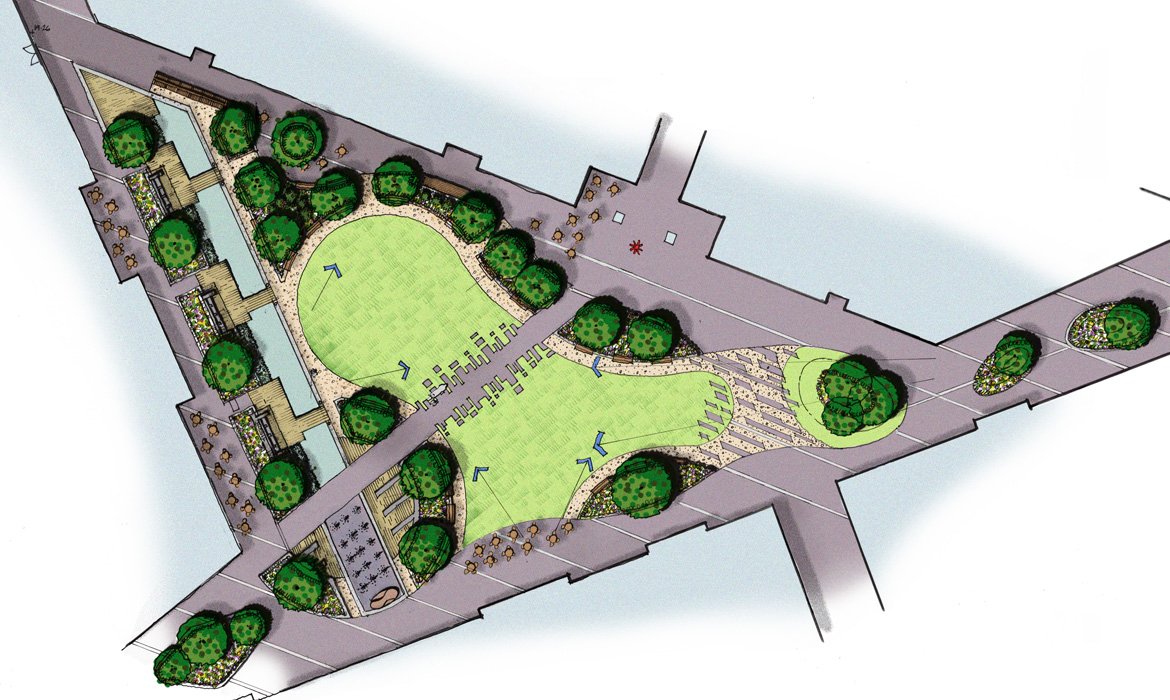 MW’s Landscape Masterplan for 250 City Road
MW’s Landscape Masterplan for 250 City Road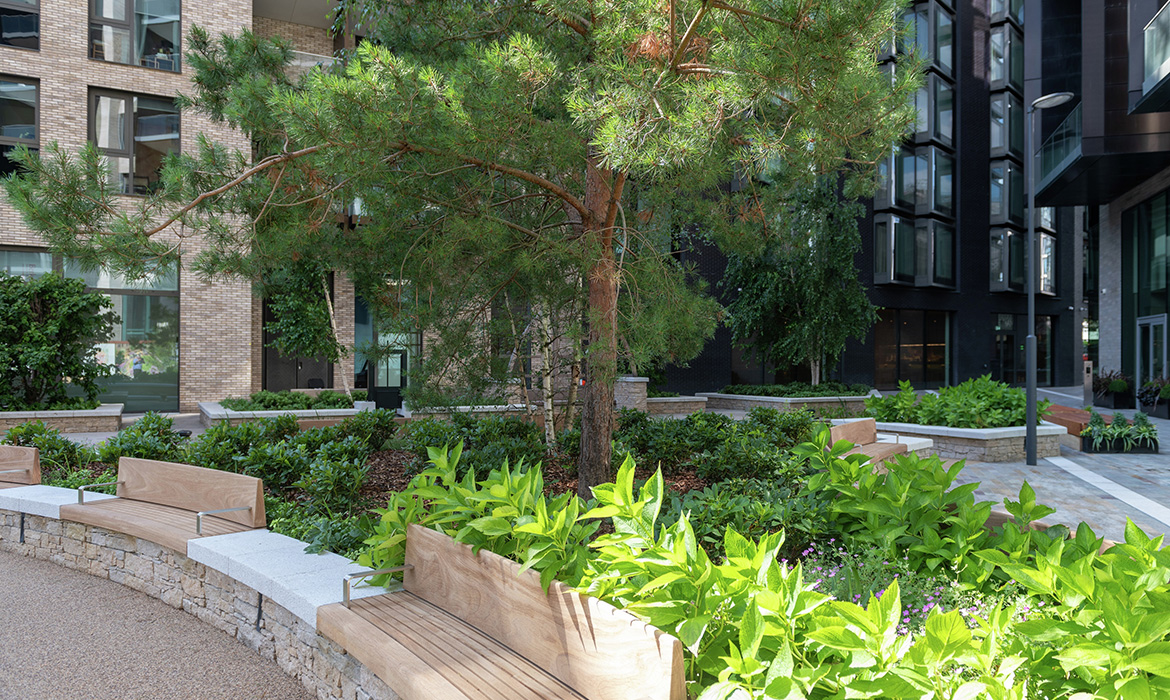 Planting at MW’s 250 City Road
Planting at MW’s 250 City Road
The MW Vision
The site historically formed part of Regent’s Canal with City Road Basin extending south under City Road into the site and surrounded by wharfs and yards. Murdoch Wickham have brought the essence of the canal back into the landscape, using water throughout the scheme as a metaphor for the canal to ensure that this important historical context is remembered. The addition of water will add an exciting element to the public realm, providing movement and fluidity to complement the hard and soft landscaping.To help to create a real sense of place, the history of the canal is also setting the tone and direction of the public art within the site, the Central Plaza will be animated with a series of public art pieces to reflect this. To achieve our ambitious public art vision MW are working with renowned sculptor Ian Rank-Broadley.
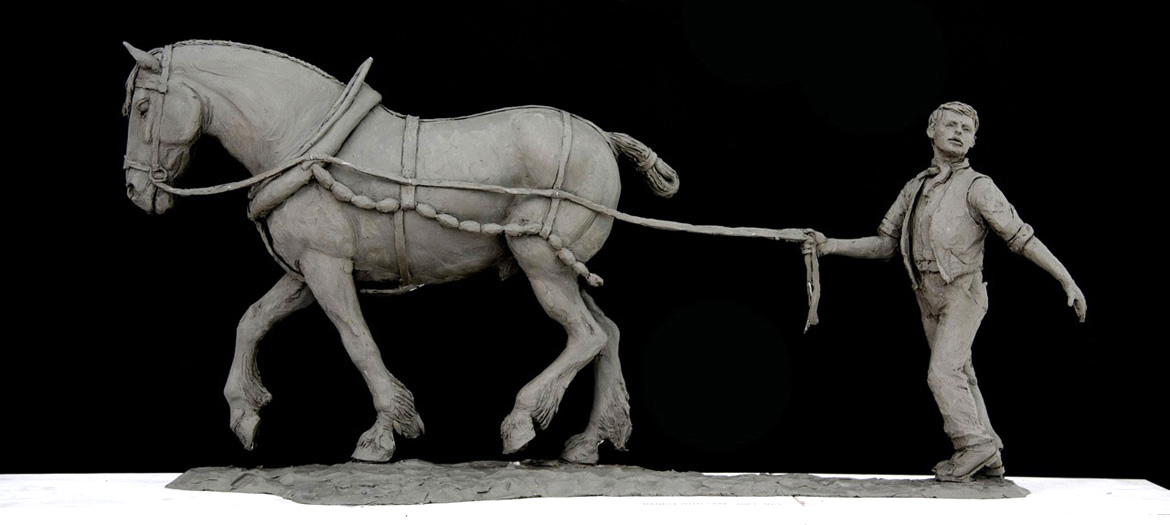 Ian Rank-Broadley’s maquette for Man and Horse at 250 City Road
Ian Rank-Broadley’s maquette for Man and Horse at 250 City Road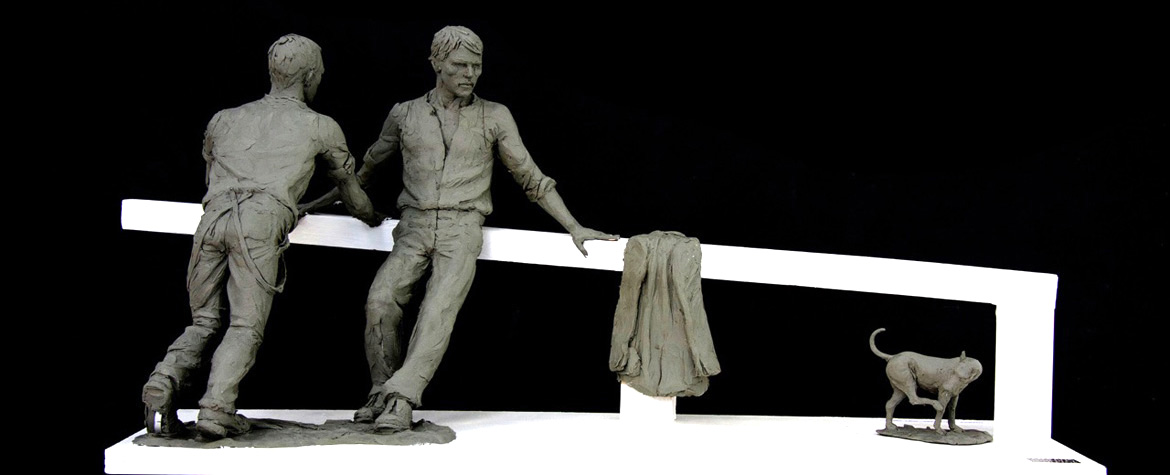 Ian Rank-Broadley’s maquette for Two Men and Dog at 250 City Road
Ian Rank-Broadley’s maquette for Two Men and Dog at 250 City Road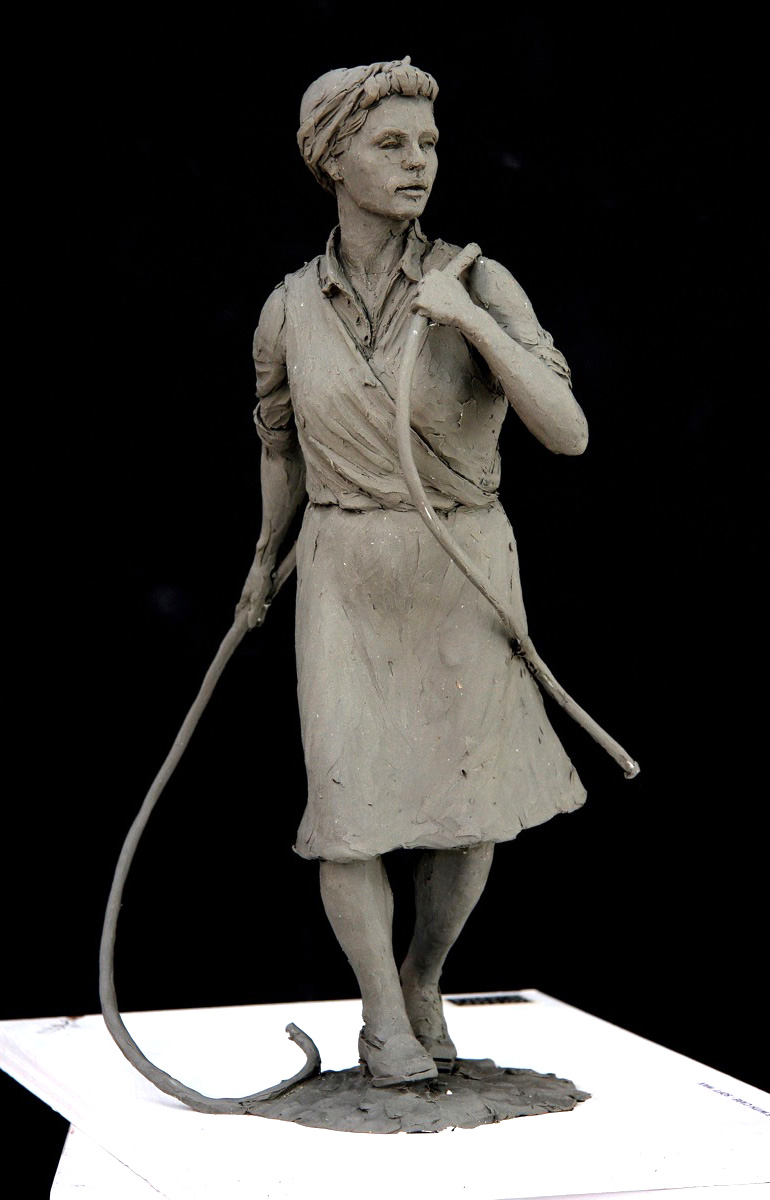
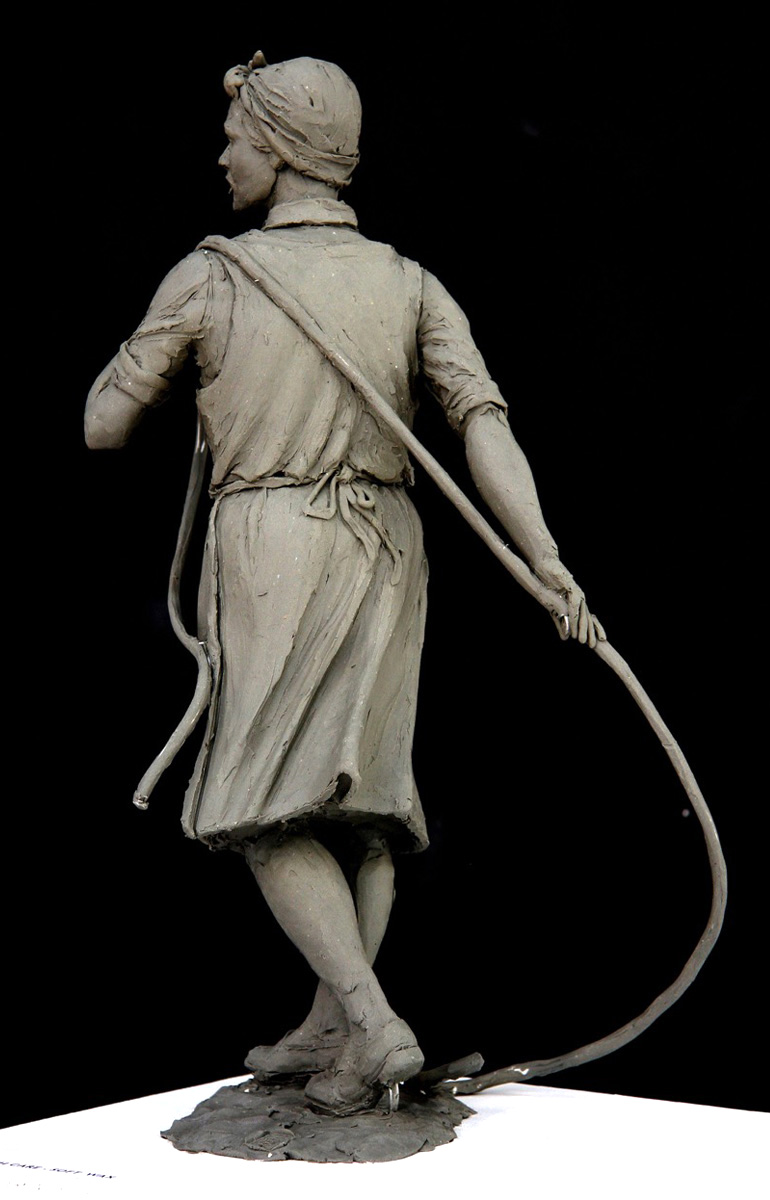
The MW Touch
The planting proposals for 250 City Road have been carefully considered so as to create a rich and varied landscape experience for both residents and visitors to this important site. In particular, detailed attention has been paid to the use of individually selected trees and multi stemmed specimen shrubs that are in harmony with the scale of the area and the surrounding built environment. Plant choices include native selections such as birches, pines and cherries supported by smaller specimens of maples, dogwoods and amelanchiers. These plants will be individually selected for their shape and character and have been chosen to add texture and seasonal colour to the landscape proposals.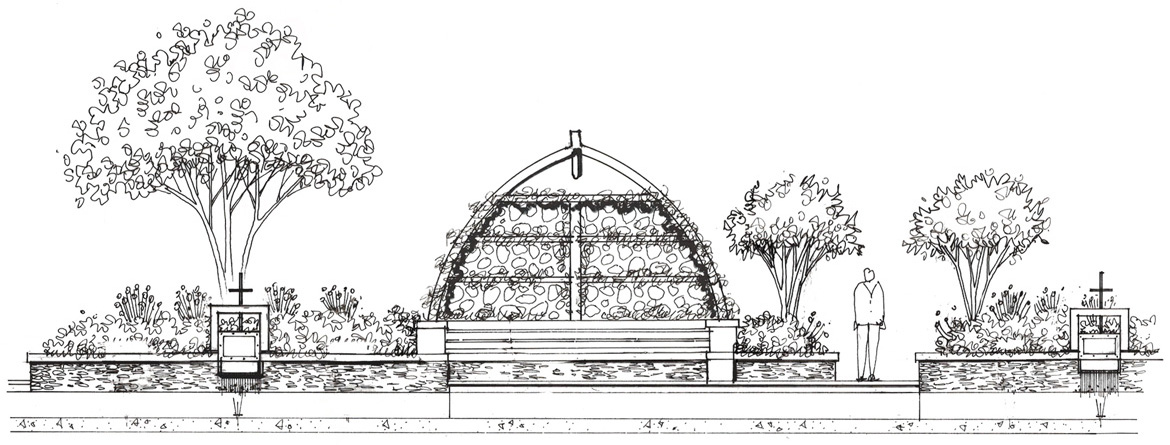 MW’s seating pergola design detail
MW’s seating pergola design detailThe use of a rich and varied range of shrubs, perennials, climbers and aquatic plants chosen for their contrasting foliage, flowering character and individual shape and form. These will combine to reinforce the strong sense of seasonal change across the site and will ensure that visual interest is maintained at all times of the year. The careful selection of plant types to ensure that they do not block eye level views across the site ensuring that it is easily surveilled and safe and secure at all times. Plant choices will also ensure that there is a balanced combination of evergreen and deciduous types across the area.
Selecting a species rich ground flora which includes the planting of large numbers of native bulbs such as daffodils, bluebells, fritillarias and autumn crocus. The planting design at 250 City Road meets the design targets set by the consultant ecologist and include a balanced mix of native and ornamental plant types that are of particular value to pollinating insects. The lawns contain twenty six species of native grasses that can be cut to different heights to encourage both biodiversity and visual interest.




